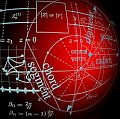Quick Ratio Calculator
Instructions: Use our Quick Ratio Calculator with steps, to compute the quick ratio \((QR)\) for a firm. You need to provide the current assets \((CA)\), the inventory \((I)\) and the current liabilities \((CL)\):
Quick Ratio Calculator
More about this quick ratio calculator that will help you interpret the results provided by this solver
The quick ratio corresponds to the ratio between the liquid current assets and current liabilities. This ratio is a measure of short term liquidity and it indicates how many times can current debt and liabilities be paid using only its liquid current assets.
How is the quick ratio computed?
The quick ratio is computed as:
\[ QR = \displaystyle \frac{CA - I}{CL}\]What is the importance of the quick ratio? It is quite important, because the quick ratio measures the short term liquidity of a firm, but it corrects the current ratio by not considering assets that are not totally liquid in the short term, like inventories.
Is a high quick ratio good?
In general terms, the answer is yes, because a higher quick ratio indicates more liquidity. But then the question is : What is a good quick ratio? How high a quick ratio needs to be in order to be considered good?
A good quick ratio will be greater than 1, but it is something that changes from industry to industry. Indeed, a firm will want to have a quick ratio that is larger than 1, and ideally is higher than the average for the industry in which the company operates in.

Quick ratio example
Question: A manager of a firm is concerned about short-term liquidity. If the firm's current assets are $10,000, the inventory is $4,000, and the current liability are $5,500, what is the quick ratio of the firm?
Solution:
This is the information we have been provided with:
• The current assets are \(CA = 10000\), the inventory is \(I = 4000\), and the current liabilities are \(CL = 5500\)
Hence, the quick ratio \(QR\) is computed using the following formula:
\[ \begin{array}{ccl} QR & = & \displaystyle \frac{\text{Current Assets - Inventory}}{\text{Current Liabilities}} \\\\ \\\\ & = & \displaystyle \frac{10000 - 4000}{5500} \\\\ \\\\ & = & \displaystyle \frac{6000}{5500} \\\\ \\\\ & = & 1.09 \end{array} \]Therefore, the quick ratio, for the given current assets of \(CA = 10000\), inventory of \(I = 4000\) and current liabilities of \(CL = 5500\), is \(QR = 1.09 \). This means that firm can pay \(1.09\) times of its current (short-term) debt and obligations with its more liquid current assets.
Other financial calculators that measure liquidity
You can use also our current ratio calculator , which includes inventories in the liquid assets. Also, you may be interested in using our inventory turnover ratio calculator , in order to deal how a firm deals and how efficiently they deal with their inventories.




